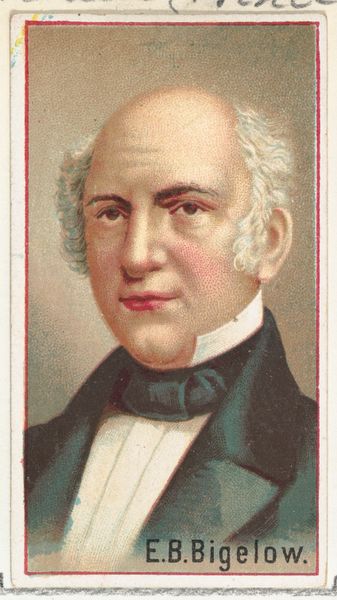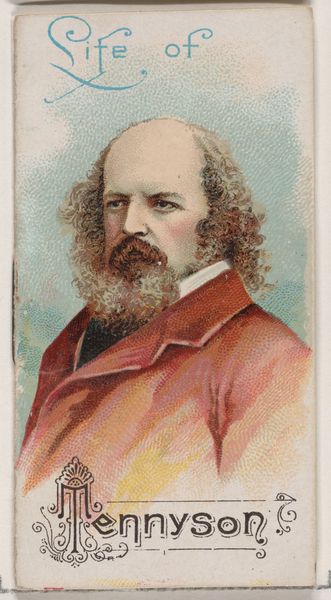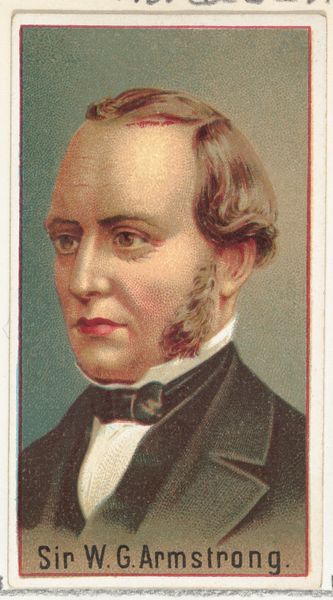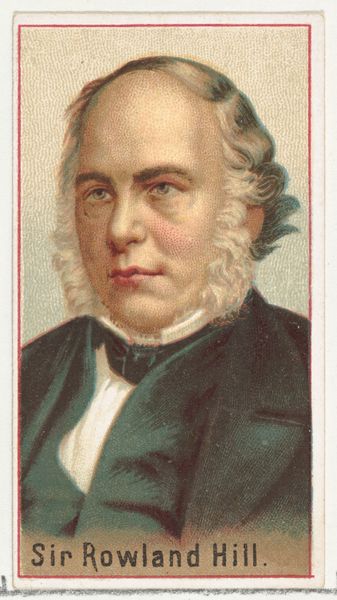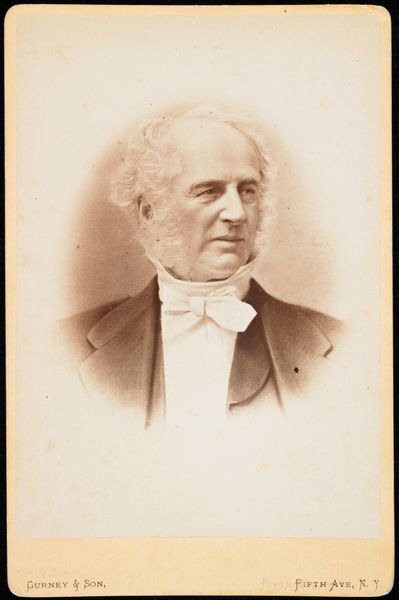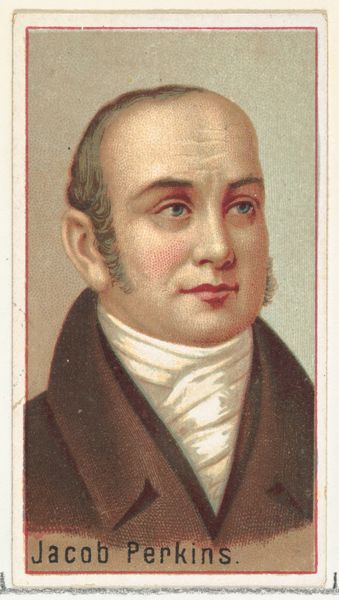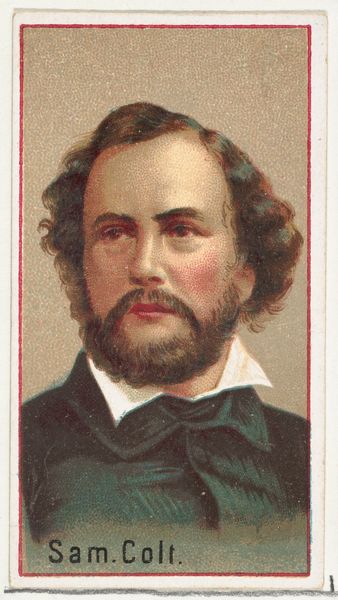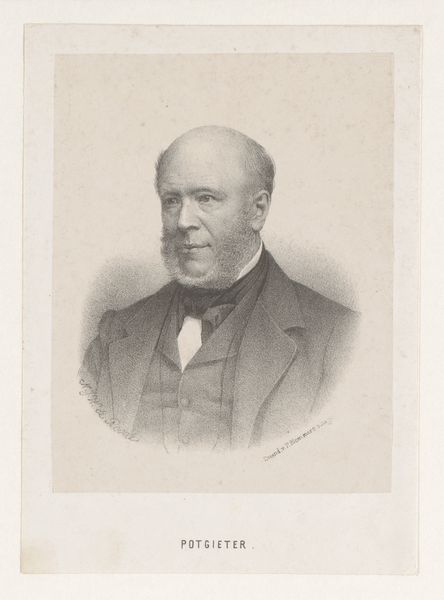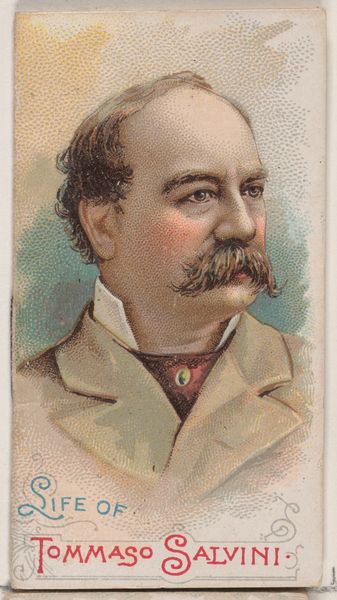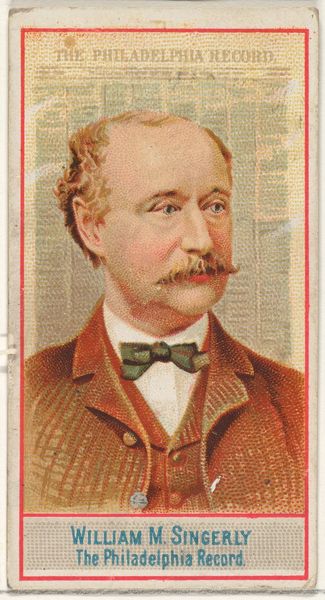
Life of Sir John Everett Millais, R.A., from the Histories of Poor Boys and Famous People series of booklets (N79) for Duke brand cigarettes 1888
0:00
0:00
drawing, print
#
portrait
#
drawing
# print
#
impressionism
#
men
#
portrait drawing
#
watercolour illustration
Dimensions: Overall (Booklet closed): 2 3/4 × 1 1/2 in. (7 × 3.8 cm) Overall (Booklet open): 2 3/4 × 2 7/8 in. (7 × 7.3 cm)
Copyright: Public Domain
Curator: It's remarkable to consider that what we're looking at now, this small portrait of Sir John Everett Millais, comes from a series of cigarette booklets made in 1888 by W. Duke, Sons & Co. It was part of their "Histories of Poor Boys and Famous People" series. Editor: You know, my first impression is...intimate, in a strange way. Despite the context as a mass-produced cigarette card, the delicacy of the watercolour illustration lends this small piece a tender quality, particularly to his rather world-weary eyes. Curator: It's fascinating, isn't it? To see this icon of the Pre-Raphaelite Brotherhood immortalized, well, commercialized in this form. It shrinks his grand artistic persona. How different this is from one of his larger history paintings. Editor: Exactly. Think about the material conditions of its creation. Duke needed to rapidly reproduce an image to drive consumption of tobacco. So, you've got skilled printmakers, likely anonymous, meticulously reproducing an image, bringing Millais to the masses. What did Millais think about that? Curator: A curious question. This commercialization reflects the rise of celebrity culture, wouldn't you say? Here is an artist, promoted almost like a brand, consumed, and quite literally burned through in the process of smoking a cigarette! It's strangely fitting when one thinks about how beauty is fleeting. Editor: Fleeting, like labor? Absolutely. It highlights this complicated system. Think of all those working-class hands involved – growing tobacco, manufacturing cigarettes, printing these cards – each step contributing to a cycle of production, labor, and consumption. It's a reminder of the social machinery that makes even "high art" accessible, in a sense, although abstracted through this form. Curator: But doesn't this also allow us to consider his influence differently? No longer locked within a frame in a gallery but traveling inside pockets, circulating and being exchanged on a massive scale... it makes him almost an accessible muse. A figure with his hand in both worlds. Editor: Perhaps a glimpse behind the veil, a moment to question not just what art is, but how and for whom it's produced and consumed. That's what grabs me about this piece! Curator: I suppose it makes me reconsider how we tell the story of these “famous people”. And perhaps we ought to celebrate all who brought him here—both poor boys and famous people!
Comments
No comments
Be the first to comment and join the conversation on the ultimate creative platform.

